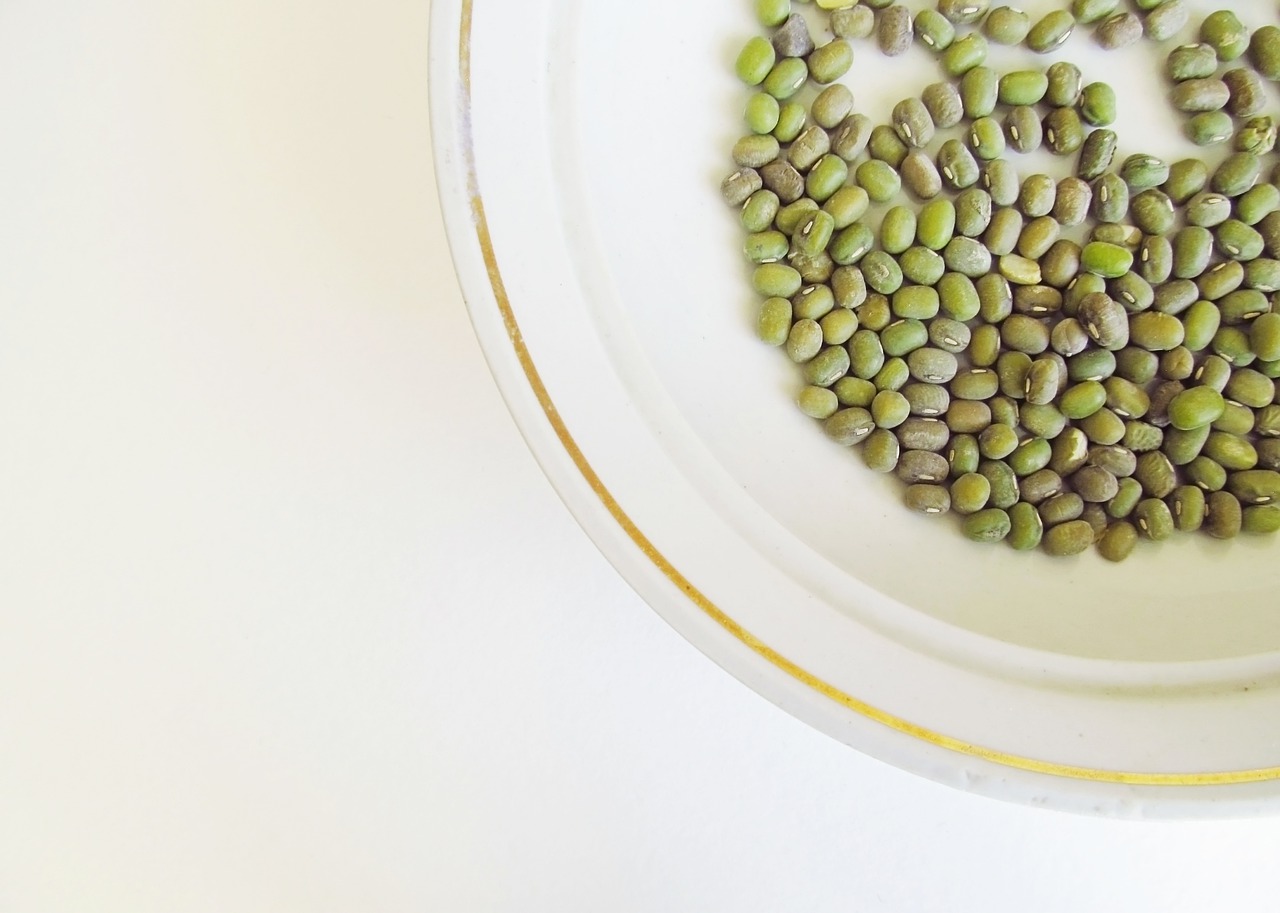You’ll find both mung beans and adzuki beans in any Asian market. Both are legumes that are commonly used in various Asian dishes.
Their compact size and mild taste make them an ideal option for people who don’t typically eat a lot of beans. However, there is one major difference between mung beans and adzuki beans.
Mung beans are small green legumes about the size of a pea. They have a subtle flavor, which makes them perfect for use as a secondary ingredient in soups and stews, or as a primary one when paired with other strong flavors like garlic or ginger.
Mun g beans are also known as green gram because of their teal-green color.
As with the mung bean, adzuki has a subtle flavor that is most often amplified by pairing it with complementary flavors such as garlic, onion, ginger, cilantro, and tamari sauce.
The greatest difference between mung vs adzuki is the texture of the two different legumes..
Adzuki Beans
Adzuki beans are small reddish-brown beans that are typically used to make red bean desserts or other Asian sweets. Like mung beans, adzuki beans are a type of legume and therefore high in protein and fibre. allergies.
Adzuki beans are a staple ingredient in Japanese cuisine, where they are typically used in sweet dishes like dorayaki (Japanese pancakes) and manjū (Japanese-style steamed buns).
They are also commonly used in Chinese and Korean desserts and soups.
While they are most often used on their own in sweet dishes, adzuki beans can also be used as a side dish similar to kidney beans in a casserole or chilli, or paired with rice for a side like fried rice.
Mung Beans
Mung beans are small green legumes that are commonly sprouted or fermented and then added to salads, curries, and other savory dishes.
They are also used in many types of Asian porridge, such as Chinese congee and Japanese rice porridge, or eaten in the form of noodles.
Mung beans are considered to be good for the digestive system, making them an ideal item to add to a meal if you have digestive issues. They are also full of fibre, protein, and various vitamins and minerals, including iron and zinc.
Mung beans are a common ingredient in Chinese, Korean, and Indian dishes, and are often ground into a paste or flour.
They are also used in the majority of Asian desserts like adzuki beans, along with taro, sweet potato, and pumpkin. While mung beans are most often used in savory dishes, they can also be eaten with sweet side dishes like fruit or used to make sweets like halva.
The Differences: Texture and Colour
The biggest difference between mung beans and adzuki beans is the texture. Mung beans are firm and hold their shape when cooked, while adzuki beans turn into a soft, almost creamy texture that is easy to eat on its own without any additional sauces or spices.
This texture difference makes them ideal for different types of dishes, since adzuki beans are often eaten as a side dish while mung beans are usually used in a main entrée. Mung beans have a bright green colour, while adzuki beans are a dark reddish-brown.
This is because mung beans are sprouted, while adzuki beans are fermented. Fermenting the beans not only changes the colour but also enhances their nutritional value. Fermenting also has the added benefit of reducing bloating and indigestion.
Mung Bean Dishes to Try
– Mung Bean Pancakes: Mung bean pancakes are often eaten as a side dish for Chinese meals, but they also make a great snack or dessert. You can make these pancakes with either mung or adzuki beans, but mung beans are better for incorporating into a savory dish.
You can find the recipe for mung bean pancakes here. – Mung Bean Noodles: Mung bean noodles are a traditional Korean dish, but they are also eaten in Chinese and Japanese cuisine. You can find the recipe for this Asian-inspired dish here.
Mung Bean and Vegetable Surimi: Japanese surimi is usually made with pollack or white fish, but this recipe uses mung beans as a substitute.
You can find the recipe for m-Br surimi here. – Mung Bean and Coconut Vegetable Curry: This Indian-inspired dish is full of fibre, nutrients, and flavour. You can find the recipe here.
Adzuki Bean Dishes to Try
– Adzuki Bean Tofu: This Chinese dish is a savory, vegetarian main that features adzuki beans ground into a paste and used to create a tofu patty.
You can find the recipe for adzuki bean tofu here. Adzuki Bean Quinoa Porridge: This traditional Korean dish takes the same ingredients as the Chinese porridge but includes adzuki beans and quinoa. You can find the recipe for adzuki bean quinoa porridge here.
Adzuki Bean and Pumpkin Halva: This Indian dessert is made with toasted sesame seeds and pumpkin along with adzuki beans. You can find the full recipe for halva here. –
Red Bean Ice Cream: This easy ice cream recipe only requires a few ingredients and is a great dessert for anyone who doesn’t eat dairy. You can find the recipe for red bean ice cream here.
Final Words
There are lots of different types of beans out there, but adzuki beans and mung beans are a great place to start. They are both high in protein and fibre, and they are easy to incorporate into your everyday diet.
Whether you use them to make a traditional Asian dish or incorporate them into a sweet treat, they are a tasty and healthy way to add more beans to your diet.

